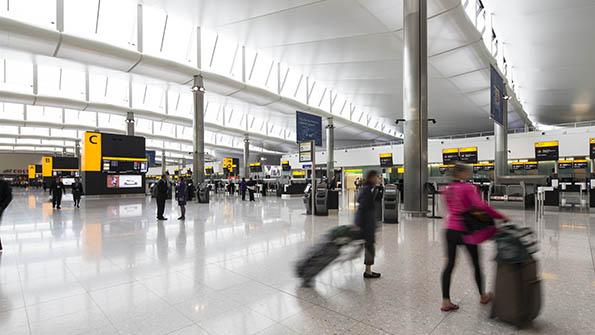This article is published in Aviation Week & Space Technology and is free to read until Sep 11, 2024. If you want to read more articles from this publication, please click the link to subscribe.
Commentary: Sustainability Strategy For Airlines

Sustainability, as defined by the United Nations (UN), means “meeting the needs of the present without compromising the ability of future generations to meet their own needs.” The UN’s 17 sustainable development goals cover three categories: environment, economy and society. The environment category, on which this article focuses, says airlines should aim to “find ways to minimize their industry’s environmental footprint while still providing efficient and convenient air travel.”
Airlines have recognized the importance of integrating sustainability into their strategies. The Lufthansa Group, for example, adheres to the mission of “connecting people, cultures, and economies in a sustainable way.” The Air France–KLM Group’s mission is that it “aims to become a champion of air transport in Europe, while fulfilling its role as a pioneer of sustainable aviation.” Qantas Group recognizes sustainability as “one of [its] key foundations.”
These companies and others understand that embracing sustainable practices benefits the environment and enhances their brand reputation in the face of growing concerns about climate change and flight-shaming movements.

A large number of airlines have incorporated sustainability into their operations via the renewal of their fleets with more efficient and lower-emission aircraft, as well as the use of sustainable aviation fuels (SAF). Scandinavian Airlines (SAS) has set an ambitious goal to reduce CO2 emissions by 25% by 2030 through fleet renewal and increased use of SAF. Qantas aims to achieve net-zero CO2 emissions by 2050—the industry-wide agreed target—through initiatives such as adding fuel-efficient aircraft and carbon-offset compensation programs.
But will these measures be sufficient for the future? And how will they affect the customer experience?
The importance of the entire customer perspective is extremely important. Some airlines have already begun to go beyond operational changes and to focus on enhancing the passenger experience in a sustainable manner. They are aware that customers are ready to make some sacrifice when it comes to cost, time, comfort and convenience and some airlines are striving to make each touchpoint more sustainable.
Here are some examples of how sustainable approaches can be factored into the customer journey:
The booking process: Airlines such as British Airways offer carbon offset programs, allowing passengers to calculate their flight’s emissions when booking their tickets and to offset them by investing in environmental projects. Airlines could also offer incentives for choosing flights with lower emissions or encourage passengers to make sustainable choices during the booking process by selecting eco-friendly amenity kits, biodegradable meal containers or sustainably sourced blankets.
- Getting to the airport: Efforts can be made to promote sustainable transportation options. Airlines can partner with public transportation providers or offer shuttle services using electric or hybrid vehicles. KLM Royal Dutch Airlines collaborates with Dutch railways to offer passengers a seamless journey from their departure city to the airport via train. Lufthansa follows a similar approach with Deutsche Bahn, as the first intermodal partner of the Star Alliance.
- Departure: Airports play a crucial role in creating sustainable customer journeys through sustainable practices such as energy-efficient infrastructure, waste management systems and renewable energy sources. San Francisco International Airport (SFO) has installed solar panels and implemented water conservation measures, while Amsterdam Airport Schiphol (AMS) has introduced water bottle refill stations and encourages passengers to bring their own reusable bottles to reduce single-use plastics. It is a shared responsibility of airlines to actively support these initiatives and communicate them to their passengers.
- Check-in and security: Digital solutions such as mobile check-in and electronic boarding passes reduce the need for printed documents and minimize paper waste and allow airlines to provide passengers with real-time updates on their flight’s environmental impact, including the amount of CO2 emissions saved through digital processes.
- In flight: Where possible and if it doesn’t add to the sustainability/waste burden, regional, eco-friendly, vegetarian meals can be offered that are sustainably packaged, along with plastic-free amenity kits made of sustainable materials. KLM additionally collects its single-use plastic items and recycles them to create small customer gifts produced by a 3D printer.
- Arrival: Similar to the departure airport experience, sustainable transportation options at destination airports can be implemented, such as electric shuttles or public transit connections.
The science of brand management says a company’s strategy, as its intended long-term direction of development, has to be experienced through its behavior and implemented in a practical way that can be experienced by the customers along their journey with its various touchpoints. Only if this prerequisite of “keeping the promise” is fulfilled in a consistent way, free of contradictions, can the brand be considered authentic. The authenticity of a brand leads to customer trust and fosters future loyalty.

Passengers and corporations are increasingly conscious of the environmental impact of their travel choices and expect airlines to align their actions with their sustainability claims. Customers expect transparency and honesty regarding reduced CO2 emissions and sustainable practices. They want to see tangible efforts being made to reduce CO2 emissions and to promote sustainable practices throughout the journey. It is not enough for airlines to simply state their commitment to sustainability; they must demonstrate tangible actions that can be seen throughout the journey. If an airline fails to align its customer journey with a sustainable strategy, it risks falling into the trap of greenwashing—using misleading marketing tactics to create a false impression of environmental responsibility without substantial actions behind it—which can erode trust, reduce authenticity and lose customers who feel deceived by empty promises.
MATURITY ASSESSMENT
To find out whether an airline is already using the opportunities along the sustainable customer journey to differentiate its brand and to identify areas for improvement, a sustainability maturity assessment (SMA) can serve as a valuable tool to understand strengths and weaknesses in terms of sustainability and provide a benchmark against industry standards and best practices, allowing airlines to set realistic goals and develop strategies for continuous improvement.
By conducting an SMA, airlines gain insights into how their sustainability efforts are perceived by customers. This knowledge enables them to make informed decisions about where to allocate resources and implement changes that will have the greatest impact on both the environment and customer satisfaction. Ultimately, integrating sustainability into every aspect of the customer journey is not only an ethical responsibility, but also a strategic advantage.
With the aviation industry as a whole working toward a greener future by integrating sustainability into its operations, airlines that create a consistent and sustainable customer journey will differentiate themselves in the market, attract environmentally conscious passengers, and build long-term brand loyalty.
While there is still a long way to go, it is encouraging to see that some airlines are putting the environment at the center of their strategic decisions. That prioritization, based on an SMA, will achieve a strengthening of brand authenticity, trust and loyalty, and guide airlines on their path toward becoming more environmentally responsible.
Sina Bonath is a consultant at Lufthansa Consulting. Wolfgang Bublitz is an associate partner at Lufthansa Consulting.




